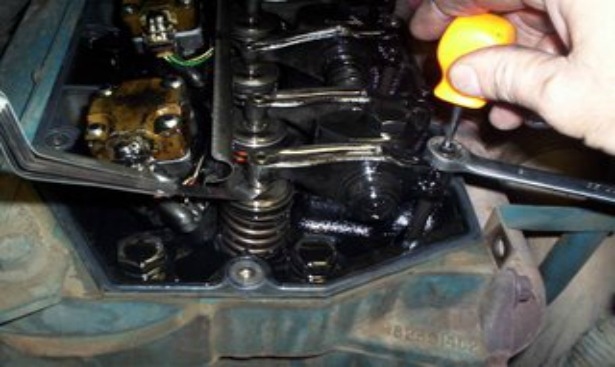The International DT 466E Diesel Engine – Steps Required To Adjust Valves
The DT 466 E (electronic) diesel engine is controlled by an ECU (engine control unit) which has to be removed before adjusting the engine valves. This step adds time to the valve adjustment but necessary to gain access to the valves.
Once the charge air piping and dog house is removed working on the valve cover removal is much easier. The ECU assembly can be removed starting with the wiring harness connector using a 1/4 inch square drive ratchet and extension. This is a multi-pin connector so care has to be taken.
With the harness removed the ECU is next (10 mm socket) followed by the mounting plate (4 valve cover stud nuts and one fastener on the block). This will make room to remove the valve cover fasteners. The valve cover is aluminum cast and heavy since it also serves as the air intake manifold.
On a school bus application it’s much easier to remove the doghouse in the cab to have the ability to get to the back end of the valve cover. Getting access from inside the cab makes it easier to adjust valves at the rear of the head.
Once the valve cover is ready to be removed be sure to push the harness connection inside of the valve cover by moving the retaining clips that secure it to the round opening in the cover. This is important because the connector is part of the harness that controls the injectors.
Finding TDC #1 Compression Stroke
On the timing cover there is TDC cast into the housing. Line up the notch on the belt pulley and check to see if the the #1 valves are loose. The #6 cylinder valves (at TDC with #1 cylinder) will be on the exhaust stroke with no valve clearance. This will indicate #1 Cylinder is on the compression stroke and half of the engine valves are ready for adjustment.
An easy way to explain which valves need to be adjusted it to number the valves 1 to 12 starting from the front of the head.
With the #1 cylinder on compression stroke adjust #1 #2 #3 #6 #7 #10 valves to .025 in. Rotate engine 360 degrees. Now #6 cylinder is on compression stroke and adjusting the remaining valves can be completed. Adjust #4 #5 #8 #9 #11 #12 valves.
This is the procedure I use when adjusting valves on a DT 466E International diesel engine. It has never failed me and I know it will work for you as well. With today’s diesel engines valve adjustment is not a regular maintenance procedure. Diesel engine manufacturers have extended valve adjustment requirements drastically.
They are making their products more durable with less adjustments required. In our fleet we have had very few mechanical problems with newer engines and that means less time taken away from preventive maintenance.
Thanks for reading this post and I hope it helped you out. Please comment or share this with others. I appreciate your feedback.







